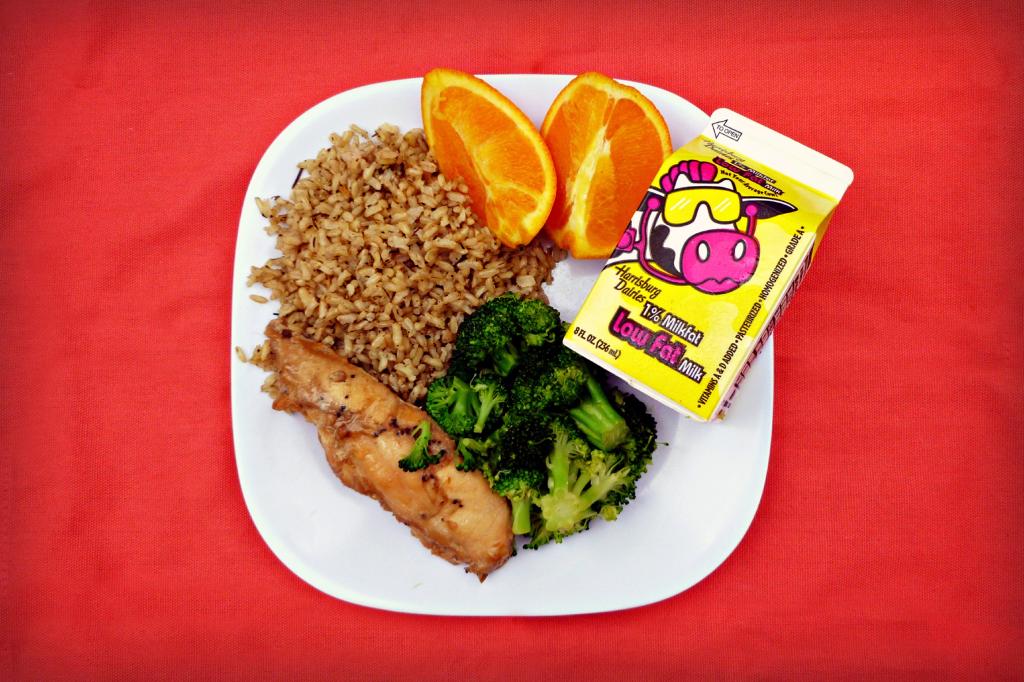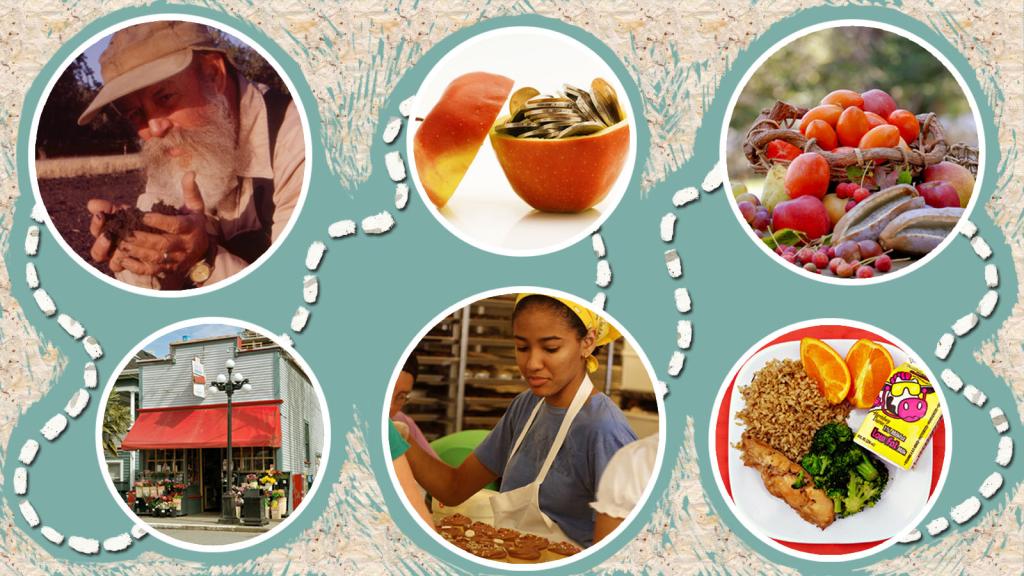This is part of a series in which we’re asking what pragmatic steps we can take to make regional food systems more sustainable. We previously spoke with organic farmer Tom Willey, the people at Veritable Vegetable, a Slow Money guy, and the folks trying to improve school lunches.
As I read Oran Hesterman’s book, Fair Food, I realized he may be one of the people alive today who is most experienced at trying to figure out how to make food more sustainable.
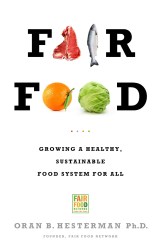 He grew up, in part, on a cattle ranch in Northern California, then helped develop a farm at U.C. Santa Cruz that would become the Center for Agroecology and Sustainable Food Systems. In the early 1970s, he founded a successful company growing alfalfa sprouts and studied plant science, eventually earning a PhD in agronomy and plant genetics. Then he taught at Michigan State before moving to the nonprofit side to promote sustainable food systems, first with the Kellogg Foundation, and then with the Fair Food Network. He seems to know everyone, and every initiative that’s been tried to improve the state of food in the U.S. in the last 20 years. We spoke by phone.
He grew up, in part, on a cattle ranch in Northern California, then helped develop a farm at U.C. Santa Cruz that would become the Center for Agroecology and Sustainable Food Systems. In the early 1970s, he founded a successful company growing alfalfa sprouts and studied plant science, eventually earning a PhD in agronomy and plant genetics. Then he taught at Michigan State before moving to the nonprofit side to promote sustainable food systems, first with the Kellogg Foundation, and then with the Fair Food Network. He seems to know everyone, and every initiative that’s been tried to improve the state of food in the U.S. in the last 20 years. We spoke by phone.
Q. A lot of the work involved in making food systems more sustainable has to do with getting people to see and pay for costs that are typically hidden from them. One group that’s achieved that is the Coalition of Immokalee Workers. And I think that, though many of us have heard of them, we may not exactly understand what they are doing. What was the innovation that the CIW figured out?
A. The innovation that I saw Lucas Benitez and his group come up with pretty early on, was that rather than fighting the growers to get more money for the farmworkers, he started looking at the problem from a more systemic perspective, and looking for a multiple-win solution. In their case the multiple-win solution was saying, hey, rather than having the growers as our enemy, what if we had the growers as our allies? If the workers are paid better and have better conditions it’s going to make the growers more productive. But the growers are in as much of a financial pinch as anyone, so they followed the trail of money up.
A generation ago, you can think of farmworkers having a boycott — I think of Cesar Chavez and the grapes. What Lucas Benitez and his coalition are doing now is a buycott instead of a boycott. A penny more a pound for tomato going on a burger, or on a taco at Taco Bell, doesn’t relate to very much increase to the end consumer. But it’s a huge boost to the farmworkers picking that tomato, if that penny actually gets to them.
So first they looked beyond the obvious problem, at the bigger system, and then they did it in a very transparent way, so that you could see the penny was actually getting back to the farmworkers.
Q. So, if this works, why don’t we see it replicated everywhere?
A. The question that I always ask is what will it take to bring a solution from an experiment or innovation stage to larger scale? And often that takes you back to changes in public policy, changes in corporate policy, and it requires us to move beyond our own refrigerators to think about solutions. A lot of what has been promoted in the sort of local and organic food movement is the notion that we can buy and eat our way out of this. I think it takes more than that.
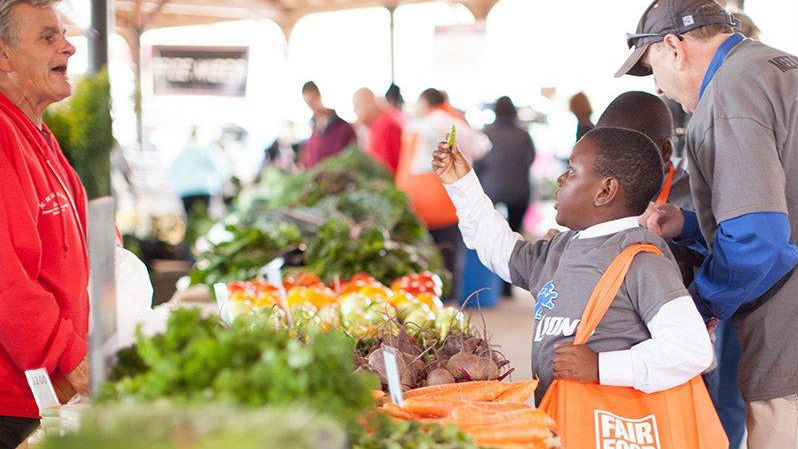
G. Smith/Detroit LionsPhoto from the Fair Food Network’s partnership with the Detroit Lions and Eastern market working with kids from Detroit Public School.
Q. Right — let’s dig into that. You’ve written about moving from being conscious consumers to engaged citizens. How do people actually do that in practice?
A. Because each and every one of use touches the food system every day, there’s an opportunity to start wherever we are. If you are a parent who has youngsters in school you can engage with trying to shift school food. If you are a student in college you can connect with the Real Food Challenge and shift buying policies there. And there’s a real opportunity to engage in policy at a larger level. You know, we just had a farm bill pass that a lot of people thought could never happen. There are very few people who realize that the amount of energy and interest we see in local food systems are now reflected in the farm bill. If you start adding up all the programs focused on local and regional food, it’s more than those efforts have ever seen.
Q. And that’s because regular people got involved with the politics?
A. Exactly. It’s the product of a lot of engaged citizens.
Q. I love your suggestion for parents to just go volunteer to serve salad at the school salad bar. Because kids are more likely to eat it if there’s an adult there serving it, and then you can start to see, OK, what else could be improved here?
A. Right. As a researcher I have an impulse to spend a lot of time researching — where’s the most important intervention, where’s the most powerful lever? I’ve found it’s better to resist that impulse.
I think of a quote that I think is attributed to Fritjof Capra, “If you want to change a system, you have to start anywhere and follow it everywhere.” If you are at a salad bar, or anywhere in the food system, and you keep your eyes open, there are so many connections. The multiple-win solutions are all around us if you open your eyes. I mean, when we at the Fair Food Network started this Double Up Food Bucks [discussed and explained here] we thought it would be something that would help people in Detroit. Now that’s led to a program in the farm bill that will allow incentives fashioned after Double Up Food Bucks to expand all around the country.
Q. When these efforts to pay the true price of food are successful, one result is that food prices naturally go up. But that makes it harder for people to buy good food. One solution is to subsidize it, as you’ve done with Double Up Food Bucks, and Massachusetts created a program to help seniors buy fresh food. Do you think that’s a good long-term policy, to have the government buying food for people with lower incomes?
A. We live in a society where we pretty much uniformly believe that there’s sometimes the need for a safety net, times when people have lost their income or get sick. And the first safety net we’ve created is SNAP [Supplemental Nutrition Assistance Program — colloquially known as food stamps] so families and children won’t go hungry, or won’t go as hungry. The challenge is that we have, over time, developed a system where the zip codes of people in poverty are the same as the zip codes where it’s really difficult to find good, inexpensive food. So to create an intervention that helps these families access more fresh fruits and vegetables with their SNAP dollars, at the very same time, those dollars are used to support farmers and a local food economy. We start using our hunger program as a hunger/improving health/local economic development program.
Q. Does it actually work? There is evidence that programs to improve food access don’t actually change what people eat if you are just plopping a grocery into a food desert.
A. What we have found is that 93 percent of participating SNAP users at farmers markets are telling us they are eating more fruits and vegetables. And 83 percent are reporting that they are buying fewer high-fat snacks. So our evaluations are telling us it’s really working well. You can’t just plop down a grocery store and expect change to happen; you have to create opportunity for the change you want to see. If you did a 20 percent shift to local food here in Michigan, you have a potential to generate 42,000 new jobs in the state with a $3 billion total economic impact on the state.
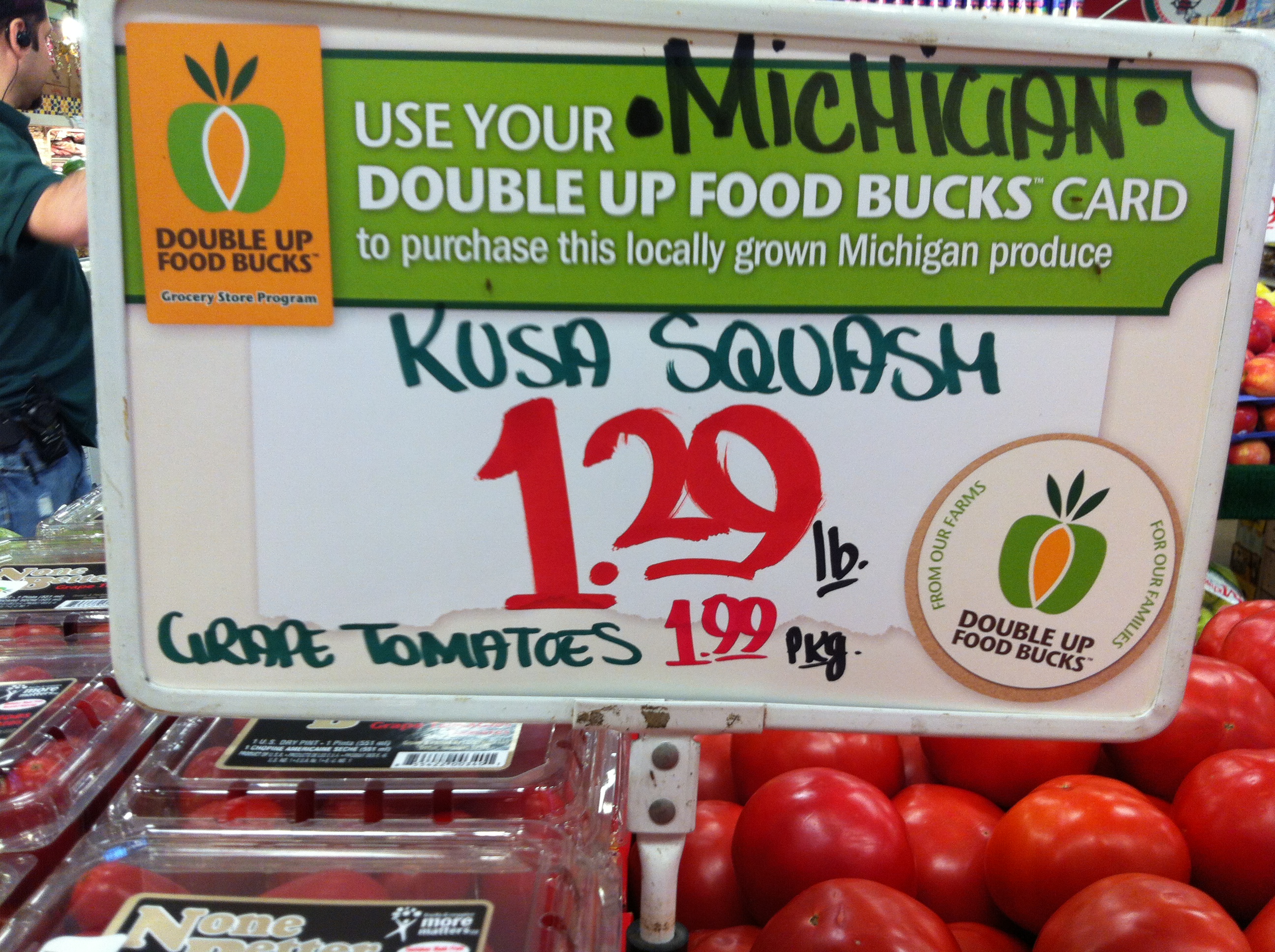
Fair Food Network
Q. You’d see a nice cycle of healthier food stimulating the economy, and allowing them to buy more at the next farmers market. But what about the health of the land? You have a vision for sustainable farming that’s a little different than organic — can you explain that?
A. I might be able to explain it best through an example that’s happening here in our area of Ann Arbor. Through a local property tax, we have protected thousands of acres of farmland surrounding the city from future development. But that’s not the whole solution. We are also making some of that farmland available for the next generation of farmers to start producing for local markets in a sustainable way.
Is it purely organic? Not every time. But you can believe that these young farmers are using many fewer chemicals, they are learning about composting for fertilization, about cover cropping and crop rotation, about companion planting and making sure you have beneficial insects. So we have an incubator that insures that we not only keep our open space open, but also productively growing food for local markets. Those young farmers are now being supported by local restaurants and markets, but you also need the distribution infrastructure, so we have an emerging food hub.
Q. So it sounds like you are saying it’s less about laying down the law and making strict rules that farmers have to follow, and more about giving them the support and the wiggle room they need to actually do the right thing for the land.
A. Right, and to do it in a way that will enable these farmers to make a good living. We’ve sort of dreamed up this idea that the only way for local and regional farmers to make a good living is through direct marketing, and I really want to dispute that. Growing directly for farmers markets, CSAs, or restaurants is great, but that’s not a way to scale up a regional food system. We also need to be supporting those enterprises in the middle of the supply chain that are able to buy what farmers produce — taking those ingredients and getting them to schools, institutions, hospitals, or stores and restaurants. That’s one of the areas where I think there is huge opportunity and huge need. So another project that we are working on is the Fair Food Fund, to finance this kind of businesses.
Q. Can you give me an example?
A. There are 13 dairy producers in Maine who were dropped by their milk distributor, because they were too widespread and it wasn’t making sense for the distributor to drive out to these rural areas to pick up milk. Instead of going out of business, these 13 farmers got together and created a company called Maine’s Own Organic Milk, MOOMilk. And now they are contracting with milk trucks to come pick it up. They have a bottling plant near Portland where they are putting the milk in the cartons and getting it to stores all across New England. They were so successful that they needed to expand, so they needed more cows. So the Fair Food Fund has financed a loan program.
Q. Why were you needed? Isn’t that what regular old banks do — make loans?
A. With this type of farmer’s co-operative, with small producers, it was not possible for them to get financing. There are two things going on. No. 1, it just looks different than the traditional businesses that banks have been financing, and No. 2, we have to realize that with the consolidation in the food industry, we’ve also had a consolidation in the banking industry, so the rural banks that are connected intimately with their community are few and far between. It’s much more difficult, we have seen, for national banks to gain an understanding of what’s happening in a local community and step up with financing in a case like MOOMilk.
Q. In the book you describe a dynamic at the first meeting of the Sustainable Food Lab that sounded really familiar to me, where there were these nonprofit leaders hectoring big food for screwing everything up, and then having the “corporate leaders disdainfully accuse the nonprofits of fixating on elite organics while people all over the world were starving to death.”
A. When you start talking about sustainable agriculture you get people very quickly choosing up sides. But the good new is that was the first meeting of Sustainable Food Lab, not the last. Those people kept talking. But you know, I really think times have changed. I hear you saying that those conversations are familiar to you, but I’ll tell you, the fact that a few weeks ago Walmart Corporation signed on to the Coalition of Immokalee Workers says something about how things are starting to change. It’s less about large and conventional against small and organic. It’s really about, again, finding those ideas and innovations that are win-win. When you do that, the ideological boundaries people have drawn for themselves start to dissolve.
Q. I hear nothing but this sort of us-vs.-them rhetoric from the people who are debating this, but when you get down to the people actually getting their hands dirty and trying to make things better, I agree, a lot of the ideology vanishes.
A. So maybe that’s a lesson for all of us. If we spend more time thinking through solutions and then doing the hard work to get them implemented, and less time staking ideological ground, we might be making more progress.
